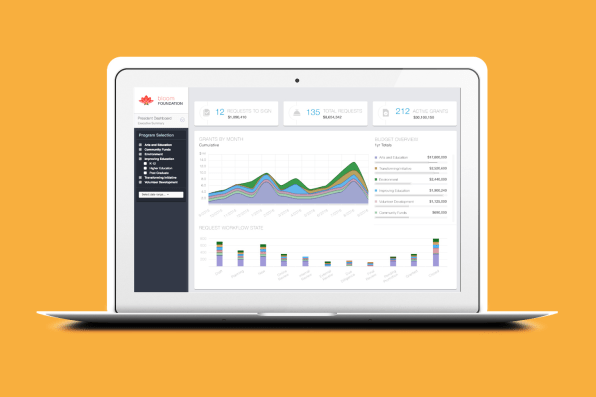How Nonprofits Can Show Funders What Success Really Looks Like
By Ben Paynter, June 30, 2017
Several years ago, shortly after backing a nutritional assistance program for children in Malawi, the Children’s Investment Fund Foundation, a grant-making group that works to improve the lives of poor and vulnerable children the developing world, realized that it had made a serious mistake. The group was supposed to be working with the World Food Programme and in-country aid groups to distribute a micronutrient powder to parents, but most parents weren’t stopping by supply stations.
It turned out there were too few aid areas located too far apart. Many already busy mothers simply couldn’t spend the majority of their day walking to get there. In response, CIFF quickly increased its investment, tripling the number of pick-up spots and sending out more volunteers to make people aware of the expansion. As the company has publicly reported, attendance jumped nearly 20%, allowing the group reach about four-fifths of those in need.

That doesn’t often happen in the slow-moving nonprofit world, where disconnected funders and grantees rely on annual reports as check-ins to troubleshoot what went awry long after those issues have occurred. But CIFF was able to respond differently because it was carefully tracked what the business world dubs KPIs–or key performance indicators–of success in near real time through a program management service company called Fluxx, which has helped more than 200 foundations, corporate and government grant makers, and large nonprofits that also fund cause work track and evaluate $7 billion in annual grants.
In the case of CIFF and its partners, sharing impact information helped everyone immediately troubleshoot problems. That worked out pretty well, but only because every already agreed that what was being tracked and measured was important. For more complicated operations success metrics aren’t always so clear cut. This issue has caused Fluxx CEO Jason Ricci to realize that, since launching in 2011, his own company had developed its own service problem.

The concern was both a cultural and tech issue. Initially, Fluxx was designed for top-down management, meaning big funding organizations, who use the service to track the deal-flow of their grants, too, were often the ones who decide ahead of time what KPIs are worth measuring, and how often groups should be reporting.
That left the 300,000 or so grant makers who interact with foundations sometimes stuck collecting irrelevant, time-wasting info for their funders when they could have a better idea of how to track progress. Plus, a recent “state of grant seeking” report funded by various grant hubs and sector networking groups shows that nonprofits don’t have the time or tools to confront that imbalance.
In June, Fluxx launched a new program called Grantseeker, which reverses the flow of information. Nonprofits can now use information that foundations are reporting to view all available funding opportunities in their areas of interest and apply for multiple grants using a single template, which is a big timesaver. On the back end, there’s an interface for groups to track and share their own data, either privately or with funders, to show what trend they’re seeing as they happen, and especially what unaccounted for indicators might affect impact or improve action.
“I think there’s a culture where the grant makers are the ones who say, ‘Jump,’ and the grantees are the ones who say, ‘How high,’” says Ricci. “They don’t feel empowered enough to say, ‘Hey, this is stupid. We should do this another way.’”

Ultimately, the hope is to lessen the work that organizations put into applying for grants while improving funder’s return on investment. Sharing data in more digestible ways may foster what Ricci calls a spirit of “passive collaboration.” “You kind of want the data to speak for itself,” he says. “Our big bet is that the platform will make people more efficient but also more data-driven and collaborative in a way that they kind of don’t think about… They are just doing it because the data is there.”
While there’s no official timetable for it, the next step is to allow groups to share information in curated feeds among themselves and to create feeds by topic or geographic location. That would give everyone on the service a better understanding of the playing field: what’s working and what other partnership opportunities might be available.
Not surprisingly, a couple of for-profit investors like that market-place building goal. Fluxx has received a total of $26 million in overall funding from both venture capital firms like Canvas and Felicis, and nonprofits like the Kresge Foundation. Other foundations like Ford, MacArthur, Kresge, Packard, and Knight are all already on the platform, which has handled roughly 1 million grants.
A new program called Grantseeker streamlines the grant application process while helping nonprofits collect and analyze data on key performance indicators, so organizations looking for funding will have the numbers to back up their efforts.
Several years ago, shortly after backing a nutritional assistance program for children in Malawi, the Children’s Investment Fund Foundation, a grant-making group that works to improve the lives of poor and vulnerable children the developing world, realized that it had made a serious mistake. The group was supposed to be working with the World Food Programme and in-country aid groups to distribute a micronutrient powder to parents, but most parents weren’t stopping by supply stations.
Fast Company , Read Full Story
(27)













